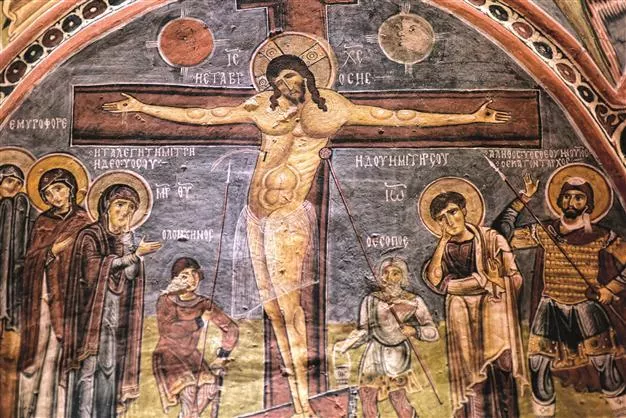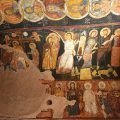Cappadocia is a region located in central Turkey that is famous for its unique geological formations and historical sites, including its cave churches and monasteries. These cave churches and monasteries are adorned with beautiful frescoes, which are paintings made on wet plaster.
The Cappadocian Cave Frescoes are an important part of the region’s cultural heritage and represent a unique blend of art and religion. These frescoes were created by Christian communities in the region between the 6th and 13th centuries, and they depict scenes from the life of Jesus, the saints, and various biblical stories.
One of the most famous cave churches in Cappadocia is the Goreme Open Air Museum, which is a UNESCO World Heritage Site. This site features several cave churches that are adorned with frescoes, including the Karanlik Kilise (Dark Church), which is considered to be one of the finest examples of Cappadocian frescoes.
The frescoes in the Karanlik Kilise depict scenes from the life of Jesus and the saints, and they are characterized by their vibrant colors and intricate details. The frescoes in this church were created using a technique called “buon fresco,” which involves painting on wet plaster with natural pigments. This technique allowed the artists to create vibrant colors that have endured for centuries.
Another important cave church in Cappadocia is the Tokali Kilise (Buckle Church), which is also located in the Goreme Open Air Museum. This church is decorated with frescoes that date back to the 10th century, and they depict scenes from the life of Jesus, the saints, and various biblical stories.
The frescoes in the Tokali Kilise are known for their intricate details and delicate brushwork. These frescoes were created using a technique called “secco fresco,” which involves painting on dry plaster with natural pigments. This technique allowed the artists to create intricate details and delicate lines, but it was not as durable as the buon fresco technique.
In addition to the cave churches in the Goreme Open Air Museum, there are many other cave churches and monasteries in Cappadocia that are adorned with frescoes. These include the churches in the Zelve Open Air Museum, the churches in the Ihlara Valley, and the churches in the Soganli Valley.
Overall, the Cappadocian Cave Frescoes are a testament to the region’s rich cultural heritage and its unique blend of art and religion. These frescoes have endured for centuries and continue to inspire visitors from around the world with their vibrant colors, intricate details, and powerful imagery.




